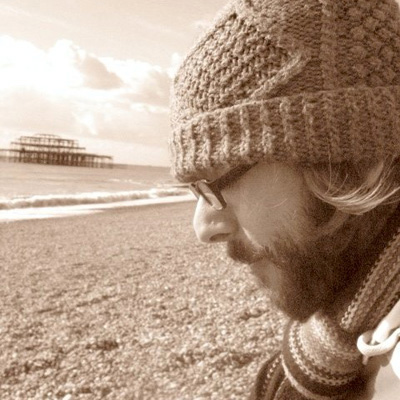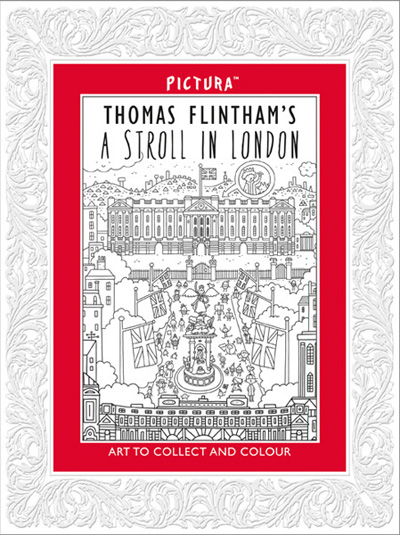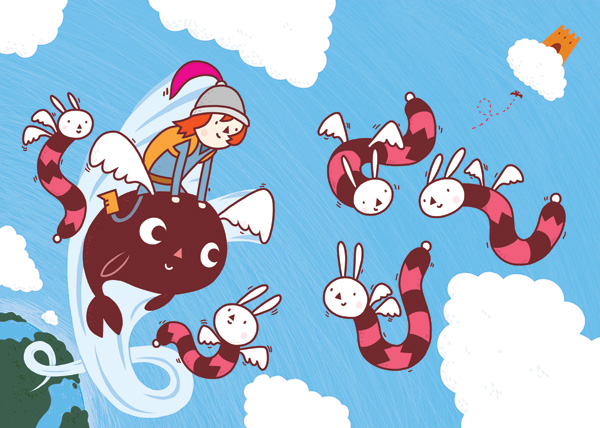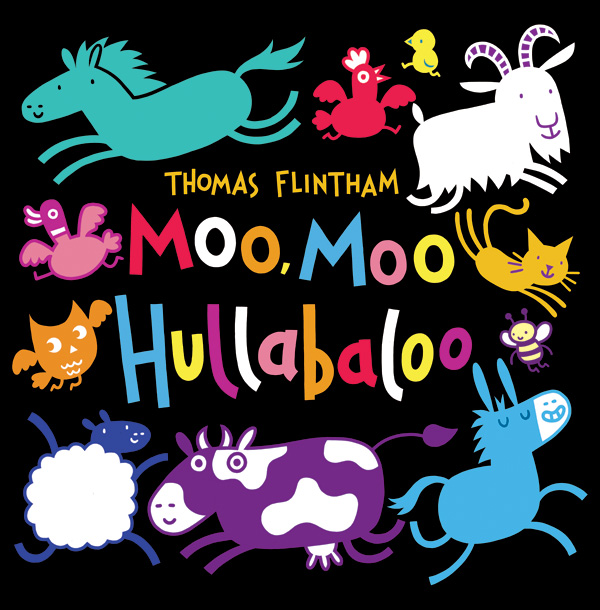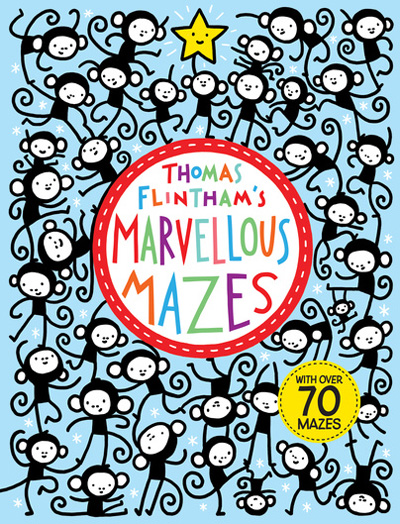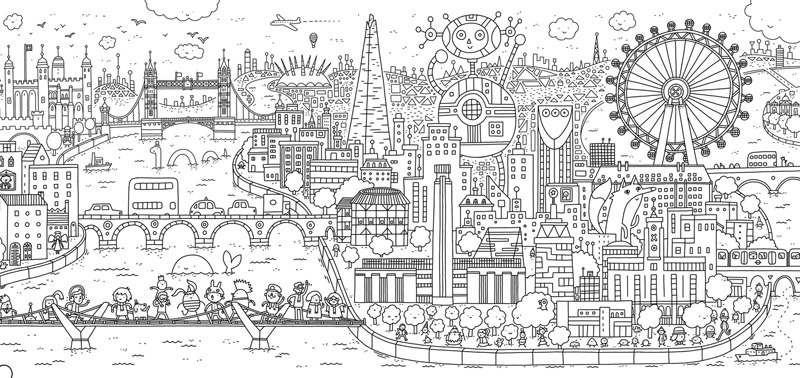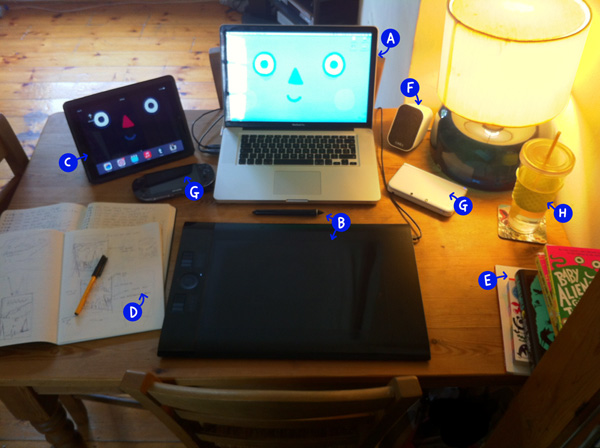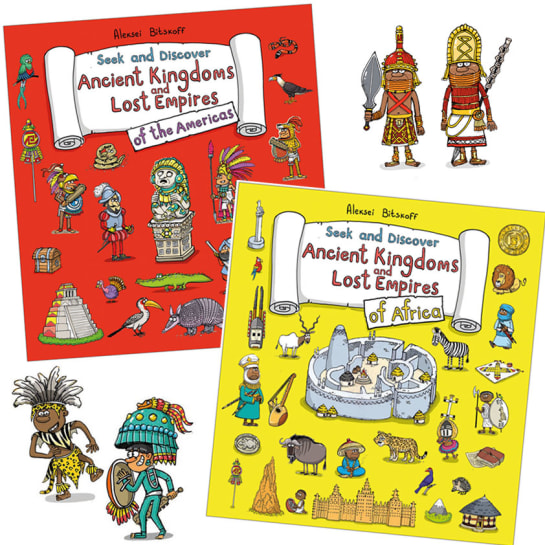[one_third]
Templar Publishing
[/one_third]
[two_third_last]
Constant doodler, self-confessed chocoholic and award winning illustrator, Thomas Flintham invites us into his bizarre imagination and discusses all things creative.
A Chase in the Sky
Your illustrations are wildly imaginative and sometimes completely bonkers, which three tips would you give us to create our own mysterious creature?
Thank you! I’m very happy with that description of my work! I guess my three tips are:
Don’t hold back! Make things as weird and colourful and silly and cute and odd as you like. I certainly don’t think anything can be too cute!
I always like to use simple shapes, at least at the start. Circular, rectangular and triangular shapes are great starting points, you can always make things more complicated and elaborate later, although never be afraid to keep things simple!
Draw inspiration from everywhere! Whether it’s a pet, a book you’ve read, a video game you’ve played, someone you know, a picture you’ve seen. Inspiration for a character can come from anywhere.
Moo, Moo, Hullabaloo – Scholastic
Do you ever get illustrators block and if so how do you overcome it?
Sadly I do! It’s never nice and it’s never easy to get past. I have a few different (and kind of contradictory!) things that I try. Sometimes if you sit there trying and trying to get something to work you just get more and more frustrated, which in turn makes things harder. It can be really helpful to take a break and do something different for a while, that can be doing some work on another unrelated project, or reading a book, or getting out of the house. Anything to give you some space from whatever it is that you’re stuck on. It can do wonders! That said, there are numerous times where I’ve spent a full working day stuck on a project but refusing to give up, when suddenly just before I’m about to call it a day it all falls suddenly into place. The best way though is to try and stop a block coming? I find having a range of projects helps, so you can skip between them depending which you’re in the best frame of mind to work on. Also not overworking and wearing yourself out can help. Ideally you’ll be getting lots of rest, having plenty of breaks and exercise, perfectly mixing and balancing work and play, but it’s often easier said than done when you have a long to do list and looming deadlines!
Is there one single project which you’ve worked on which been particularly proud of and why?
I’ve been really lucky that in the five years since I’ve started I’ve had such a wide range of projects and jobs, so everything feels different and special in its own way which makes it hard to pick one. But if I had to choose one I’d maybe go with my very first book Thomas Flintham’s Marvellous Mazes, published by scholastic. It was the first full book project I got after I graduated from my illustration MA which of course will always make it very special to me.
Thomas Flintham’s Marvellous Mazes, Scholastic
Do you find where you live inspires you and influences your work? Are there particular places you visit to sketch?
Almost all of my work comes straight out of my imagination and memory, as I almost never work from life, so I guess where I live doesn’t have much of a direct visual influence on my work. Although I don’t work from life I do soak up the world around me enough that I can draw on my memories and experiences when I am coming up with an image.
One perfect example of this is a project I did as part of Templar’s Pictura range of concertina colouring books. Each piece folds out to show one long image of a variety of subjects by a variety of illustrators. My Pictura is Thomas Flintham’s A Stroll in London and through one long image details a long walk from St Paul’s Cathedral, along the river, through central London ending at Hyde Park. As I don’t really work from life I was unsure where to start, but as I’d lived in London for almost 5 years at the time I found that I was able to sketch out a rough almost completely from memory. Once I had a basic sketch I was the able to work it up further using a combination of memory and google image searches for more specific details. The result isn’t necessarily the most accurate representation of London, but it’s a pretty definitive image of London as I see it.
Thomas Flintham’s A Stroll in London
Did you enjoy your time training as an illustrator? If you could go back to college now what would you study?
I have studied at BA and MA level and I really enjoyed it both times. My under-graduate studies were as a fine artist, although by the end of the course the main focus of my work was in comics and more illustrative projects. After graduating and working full-time in retail for a few years I was excited to return to Art College to study MA Illustration at Camberwell College of Art. I didn’t really know much about the illustration industry and it was really exciting to learn about it and to find an area that felt so perfectly suited to the work I wanted to do. It was only a one year course so it was hard work, but I loved every part of it. It was great to focus on my artwork again and I got so much from being surrounded by the other illustrators on the course. My work and understanding of illustration changed significantly during my studies and I don’t think I’d be able to be doing what I do now had I not done that course.
If I went back to college now I don’t think there is any other subject I’d rather study, I love what I do now so much! I sometimes wonder about doing a PHD but that’s mainly because I’d love to put a Dr in front of my name!
Camberwell College of Arts
How has the way in which you work changed over the years? And do you still get to draw for pleasure?
The biggest change in my work happened while I was studying for my MA. Up to that point I had mainly been working in black and white, doing almost all of my work with brush and ink. I started to experiment with using my computer so that I could start adding more colour to my black and white pieces. I found the more I experimented with working in Photoshop and using a Wacom tablet the more I enjoyed it. Eventually I stopped working on paper first and I began working straight into the computer instead. It was a big change and at first I wasn’t in complete control of it, but the more I worked at it the more it clicked with me. I now work completely digitally and I really enjoy it. It feels really natural to me now and I feel like it’s the perfect medium for me to express my ideas. I’ve been very lucky in that I’ve been solidly busy with work for a long time now with most projects overlapping each other. This means that outside of my commissioned work I don’t really get much time to draw purely for pleasure. That said I get so much pleasure from my work it would be hard to tell the difference! I do most of my initial thinking in my sketchbook, and it’s there where most of the work I do for myself happens. I’ve always been a big doodler and my sketchbooks are full of characters and pictures I’ve made for my own amusement. It would be lovely to have more time to focus on drawing just for the fun of it, but I’m always grateful that I’m as busy as I am and that I get to make a living doing the thing I enjoy the most!
A: My trusty MacBook Pro, B: Wacom Intuos tablet, C: iPad, for emails & visual references, D: Sketchbook for working out ideas and lists of things to do, E: Some of my books, F: External speakers for blastocyst music, audiobooks and podcasts, G: Videogame consoles for quick breaks and general distraction, H: Refreshing glass of water in sealed cup to prevent disastrous mac+water accidents
You can see more of the wacky world of Thomas Flintham on his website here.
[/two_third_last]
